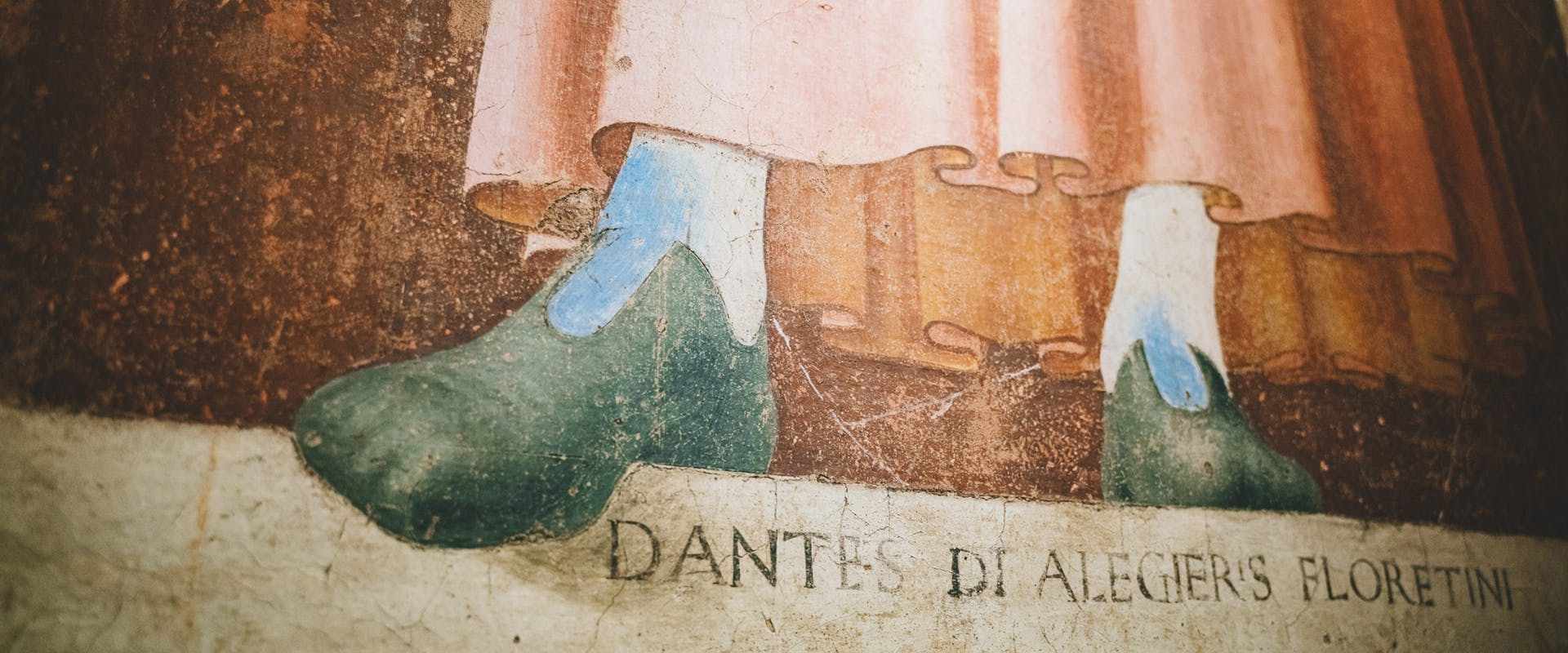Dante and Andrea del Castagno Return to San Godenzo
The fresco of Dante painted by Andrea del Castagno in the place where the painter was born and where the poet's exile began
Andrea del Castagno's detached fresco with a portrait of Dante is returning to his native Tuscan village. The painting, recently restored by the Opificio delle Pietre Dure in Florence, is crossing the Appenines from Forlì in the direction of Florence, on a journey that Dante would have liked to make himself during his exile, to become the star exhibit in an exhibition entitled "Dante and Andrea del Castagno Return to San Godenzo" (27 July – 23 August 2021) promoted and organised by the Comune di San Godenzo in the context of the "Terre degli Uffizi" exhibition programme.
The celebrated portrait of Dante is returning to the area of San Godenzo where Dante and other Florentine exiles met on 8 June 1302 and where the painter Andrea del Castagno was born. The hamlet of Il Castagno d'Andrea, thus named in the artist's honour, has been chosen to host the portrait to reflect the natural bond between the two men, each a genius in his field.
Dante, who had been sentenced to death, was never to see Florence again. The meeting in the Abbey of San Godenzo was the last occasion on which he set foot on Tuscan soil, briefly toying with the idea of returning to his native city before setting the notion aside for ever.
Andrea del Castagno's fresco, one of the most representative depictions of the poet, was originally part of a cycle of portraits of illustrious men and women of the past in the Villa Carducci di Legnaia in Florence, the property of Filippo Carducci, gonfaloniere di giustizia of the Florentine Republic. The theme, fairly common in the decoration of public buildings and aristocratic abodes in the 14th and 15th centuries, celebrated the genius and virtue of famous men and women held up as shining examples for posterity.
Stanislao Pointeau. A Tuscan "macchiaiolo"of French descent. An exhibition dedicated to Prof. Carlo Del Bravo
Exhibitions
The Medici: Mugello Folk. Family portraits from the Gallerie degli Uffizi
From 19 May to 5 November, four works from the Uffizi Galleries bring back the Grand Dukes in the country and towns of the Mugello, the family’s legendary homeland.
Exhibitions
A bizarre and whimsical temperament. Giovanni da San Giovanni, a maverick painter at the Medici court
Giovanni da San Giovanni returns to his home town with an exhibition in the "Lands of the Uffizi" series
Exhibitions
The Ceramics of Montelupo and the Uffizi. A gallery of comparisons
"Lands of the Uffizi" comes to Montelupo for the first time
Exhibitions
Embattled thinkers. Fame and oblivion of two men of letters, from the Battle of Anghiari to the siege of Famagusta
The Museo della Battaglia e di Anghiari is to host a new exhibition in the Lands of the Uffizi
Exhibitions
The Fabulous '60s in the Maremma. The mark of Ico Parisi
The splendour of the fashionable clothes of the Museum of Fashion and Costume of Pitti Palace 'parades' in Grosseto to recreate the dynamism and effervescence of the society of Southern Tuscany in the post-War period.
Exhibitions
The paintings of Jacopo Vignali, from the Gallerie degli Uffizi to San Casciano
In memory of Carlo Del Bravo
Exhibitions
Masaccio and Fra Angelico. A dialogue on truth in painting
Masaccio returns to his birthplace, Castel San Giovanni, in a dialogue with Fra Angelico
Exhibitions
La predella degli Uffizi salvata al Castello di Montegufoni
The return to Montespertoli of the Gallerie degli Uffizi predella
Exhibitions
A Renaissance Masterpiece, from France to Bosco ai Frati: A Triptych by Nicolas Froment.
15th century painter Nicolas Froment’s masterpiece returns after almost 200 years to the convent that was its home for centuries
Exhibitions
Nel segno della vita. Donne e Madonne al tempo dell' attesa
An exhibition devoted to the portrayal of the motherhood
Exhibitions
Masaccio and Renaissance masters compared to celebrate 600 years of the Triptych of San Giovenale
Masaccio’s San Giovenale Triptych displayed for the very first time alongside work by the great painters of his day
Exhibitions
Pietro Benvenuti in the Age of Canova. Paintings and drawings from public and private collections
The first “Lands of the Uffizi” exhibition to be held in Arezzo explores the work of painter Pietro Benvenuti in the age of Canova
Exhibitions
The Warrior Pope Giuliano Della Rovere and Anghiari’s Soldiers of Fortune
The link between the Warrior Pope Giuliano Della Rovere and Anghiari’s Soldiers of Fortune
Exhibitions
Giottesque Painters in the Valdelsa
Two versions of the Madonna and Child juxtaposed for visitors to discover Lippo di Benivieni and the followers of Giotto in the Valdelsa
Exhibitions
"The Final Seal". The Stigmata of St. Francis at La Verna from the collections of the Gallerie degli Uffizi
The Pinacoteca Comunale di Castiglion Fiorentino and the Gallerie degli Uffizi trade two masterpieces
Exhibitions
The Civilisation of Arms and the Courts of the Renaissance
An exhibition in Anghiari telling the story of the Renaissance courts and of the men who peopled them, amid war and culture.
Exhibitions
In the Name of Dante. The Casentino in the Divine Comedy
Dante returns to the castle of Poppi, where the Casentino inspired the Divine Comedy
Exhibitions
Dante and Andrea del Castagno Return to San Godenzo
The fresco of Dante painted by Andrea del Castagno in the place where the painter was born and where the poet's exile began
Exhibitions
